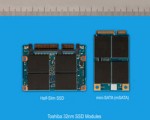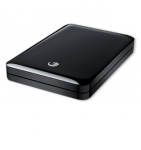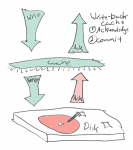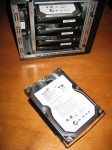With Apple almost certain to introduce a new MacBook Air, questions have turned to the specifics of the hardware to be used. A leaked pre-production photo features an odd memory configuration (not to mention four batteries), a device I immediately recognized as an SSD-on-a-stick. With this high-profile introduction of a new SSD stick form, I thought it was time to cover these unconventional new storage formats.
Terabyte home
Will OS X 10.7 “Lion” Bring USB 3.0 To The Mac?
Apple is a funny company, happy to go their own way even as the rest of the industry piles on to the latest trend. Such is the case with storage, with Apple ditching floppy drives, optical drives, and even hard disks. On the expansion side, Apple was an early and aggressive proponent of USB but stubbornly ignored eSATA. Now that PC makers are turning to USB 3.0, many are wondering when Apple will follow suit. My sources tell me that “Super Speed” USB 3.0 is indeed coming to the Mac, and very soon!
Seagate Breaks the Areal Density Limit With 1 TB 2 Platter 2.5″ Drive
Storage capacity continues to move forward on both 3.5″ and 2.5″ hard disk drives. On the small form factor side, Western Digital was first with a 250 GB platter, then Seagate shot back with a 320 GB platter, then it was Hitachi at 375 GB. So it was only a matter of time until the magical half-terabyte mark would be reached, yielding 1 TB in a 2-platter drive. Now Seagate has done it, shipping a 2-platter 9.5 mm hard disk drive in their latest GoFlex portable case.
The Four Horsemen of Storage System Performance: Never Enough Cache
Perhaps the previous discussion of spindles left you exhausted, imagining a spindly-legged centipede of a storage system, trying and failing to run on stilts. The Rule of Spindles would be the end of the story were it not for the second horseman: Cache. He stands in front of the spindles, quickly dispatching requests using solid state memory rather than spinning disks. Cache also acts as a buffer, allowing writes to queue up without forcing the requesters to wait in line.
SMB Arrays: Drive Carriers Or Not?
One reason I decided to work with the folks at DCIG to collect data for their Small Business Storage Array Buyers’ Guide was to learn more about the various products in the space. One difference I noted in these small arrays, which usually hold 4 to 8 drives, is their use of hard disk drive carriers or sleds. There are pros and cons to both approaches, but I was pleased to see that all arrays so far include everything needed to install a drive.



